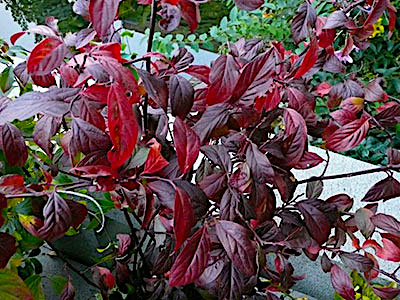Virginia Sweetspire
By Pat Dickey, Fairfax Master Gardeners
 Virginia sweetspire (Itea virginica) is a versatile native shrub that has had more popularity recently. It can be found in Zones 5 to 9 from New Jersey to Florida on the Atlantic coast and west, through the Mississippi Valley, to southern Illinois. It grows in an upright or mounded shape with arching branches. Itea (eye-TEE-ah) comes from the Greek word for willow like this shrub’s arching growth, while the name sweetspire describes its sweetly scented white catkin-like flowers that look like spires.
Virginia sweetspire (Itea virginica) is a versatile native shrub that has had more popularity recently. It can be found in Zones 5 to 9 from New Jersey to Florida on the Atlantic coast and west, through the Mississippi Valley, to southern Illinois. It grows in an upright or mounded shape with arching branches. Itea (eye-TEE-ah) comes from the Greek word for willow like this shrub’s arching growth, while the name sweetspire describes its sweetly scented white catkin-like flowers that look like spires.
Its height is 6 to 8 feet, but some of the cultivars are shorter and better suited for smaller planting areas. The leaves are dark green, simple, arranged alternately, oval, finely serrated and are 2 to 4 inches long and 1 to 1 ½ inches wide. They are deciduous but have an attractive red or burgundy fall color that lasts well into the winter.
The white flowers are ¼ inch across and grow on 5 to 6-inch long spikes that last for several weeks. They grow abundantly on the shrub and bloom from the base to the tip, making it appear that the shrub has been blooming for a long time. The flowers are produced on old wood and, therefore, the shrub should be pruned after flowering. Fruit appears as small, elongated woody capsules on racemes lasting from mid-summer into the winter.
You will want to plant this shrub in full sun to part shade. Some cultivars grow well in heavier shade as well. It prefers moist organic-rich acidic soil. You should keep it mulched to maintain moisture. This native is suitable as a foundation plant, as part of a mass planting, in a mixed border or as a specimen plant.
This shrub is both drought resistant and good for rain gardens and flooded areas. In the wild, it grows along stream beds, lakes and ponds, and has a leggier appearance. It is also deer resistant and is food for bees, butterflies and moths. Its arching branches provide nesting and shelter for wildlife. There is little maintenance needed, except that it does tend to form dense colonies by root suckering if not watched. This occurs when the area stays very moist. It will develop chlorosis if the soil’s pH is too high. Leaf spot may be seen but is not serious.

‘Henry’s Garnet’ Sweetspire in autumn
Why not plant this native shrub in your ornamental garden?
References
Sweetspire, VA Tech Dendrology
Virginia Sweetspire, The Morton Arboretum
Virginia Sweetspire, Plant NOVA Natives